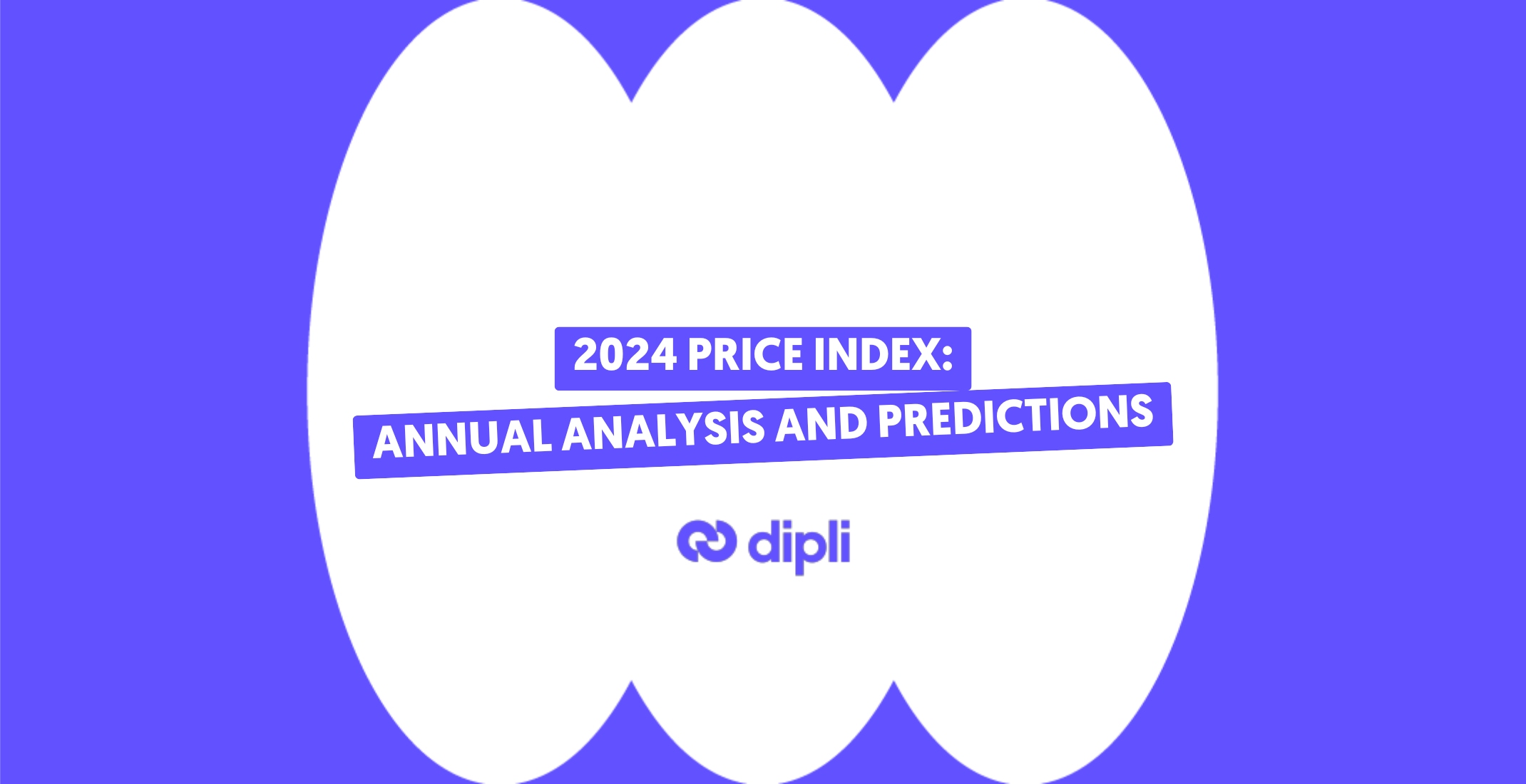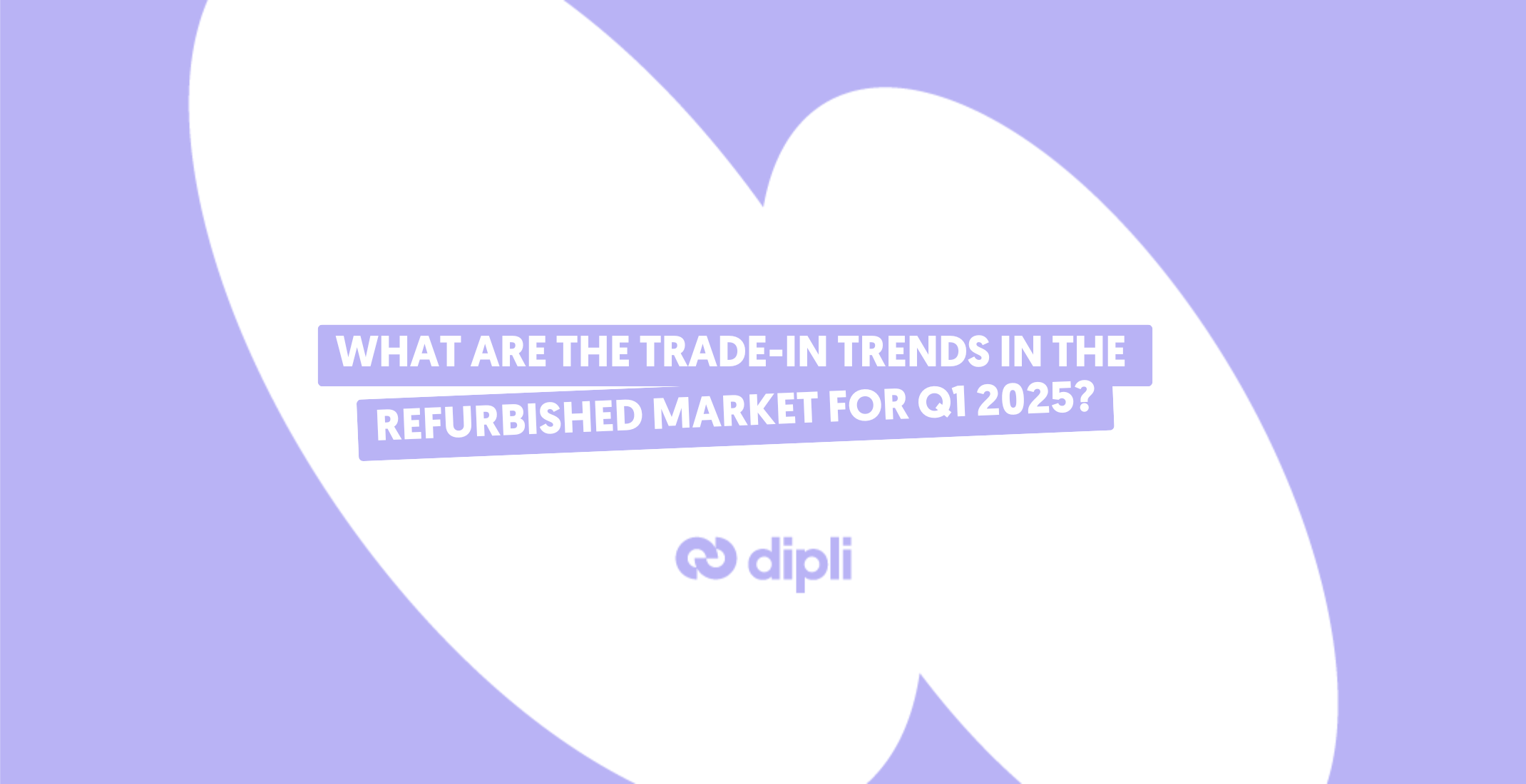Annual analysis of the 2024 refurbished price index and market predictions
05/02/2025
0 comments

In 2024, the refurbished smartphone market experienced typical seasonal fluctuations along with unprecedented factors. Between price increases and drops, supply chain pressures, and the expansion of trade-in programs, this year has laid the foundation for the trends that will shape the market in 2025.
What are the key takeaways from the past year? What are our predictions for the refurbished market in 2025? Here is our analysis based on our 2024 refurbished price index.
1. Steady growth in the refurbished market
The European refurbished smartphone market continues to break records. According to Counterpoint, refurbished devices accounted for 16% of total smartphone sales in Europe in 2023, up from 14% the previous year, representing 27 million units sold.
This trend is also evident on a global scale, with market share reaching 15% in 2024, compared to 13% in 2022, according to IDC. The global refurbished market accounted for 1.4 billion units sold in 2024 and is expected to reach 1.6 billion by 2028.
This growth reflects a gradual shift toward refurbished devices as an alternative to new ones.
2. A resilient market despite challenges
The beginning of 2024 saw price tensions in the refurbished smartphone market due to several factors:
- Chip supply shortages:
This affected certain refurbished stock levels, leading to upward pressure on market prices.
- Apple’s policy changes and price increases:
A SellCell study revealed that, following these changes, refurbished iPhones were on average 23% more expensive than refurbished smartphones from other brands. This led competitors to adjust their prices in line with Apple, ultimately driving up overall market prices.
- Extension of the renewal cycle:
With consumers tending to keep their smartphones longer than before—on average 3.69 years for an iPhone and 3.38 years for an Android, according to Assurant—the sale of new devices is declining. This leads to a lower volume of smartphones available for refurbishment, resulting in reduced stock and rising prices.
- Evolution of environmental policies and European regulations:
New European regulations promoting repairability and the circular economy began impacting the market in 2024. The implementation of the USB-C law, along with discussions around the digital product passport, is forcing manufacturers to rethink their sales and trade-in strategies. These regulations could positively influence the supply of refurbished devices while increasing transparency and consumer trust.
- Rising logistics costs and inflation:
The increase in transportation costs and logistics expenses is directly impacting refurbished prices. The growing complexity of the supply chain, with international flows of used smartphones and spare parts, is adding financial pressure on market players.
In response to these challenges, industry players have had to adapt quickly, seeking new solutions to stabilize supply and maintain the appeal of refurbished devices. Among these solutions, trade-in programs have emerged as a key strategic lever.
3. 2025: the rise of trade-in programs
The growth of the refurbished market now largely depends on the expansion of trade-in programs, which help facilitate the flow of new devices into the secondary market.
In 2024, IDC estimated the global refurbished market at $80 billion and projected a 5.6% growth by 2028, reaching a total revenue of $96 billion (IDC Quarterly Used Devices Tracker, September 2024).
To support the increasing demand for refurbished smartphones, both in Europe and worldwide, trade-in programs are emerging as a key solution. However, the full potential of trade-in remains untapped, as data shows:
- 54% of smartphones worldwide have never been resold (Counterpoint, November 2024).
- 69% of French, 67% of Germans, and 54% of Polish consumers have never resold their smartphone (IPSOS Dipli, October 2024).
However, many indicators are positive:
- The launch of new models consistently drives an increase in trade-ins:
This happens as consumers look to exchange their old devices for newer ones. When the iPhone 16 was released, SellCell reported a 38% increase in trade-in values and a 28.8% rise in trade-in volumes during the first two days of sales compared to the iPhone 15 launch the previous year.
- Growing trade-in activity in Europe and the United States:
Over €1 billion was paid to consumers through trade-in programs in Europe and the U.S. in Q3 2024, according to Assurant. This reflects a surge in trade-in adoption and the widespread expansion of this practice.
In some European countries, trade-in participation rates already exceed 40% among customers upgrading their smartphone.
For more insights into mobile trade-in market trends in 2024, check out this article:
4. An increase in prices expected in 2025
The price of new smartphones continues to rise year after year, which inevitably impacts the refurbished market.
In 2023, according to a study by HelloSafe, the average price of a new smartphone was €487. Moreover, in the same year, when looking more closely at the launch prices of premium Apple and Samsung smartphones, they hovered around €1,000 minimum, and have been steadily increasing in recent years:

Notes:
- The prices listed correspond to the launch prices in France for base models with the minimum available storage capacity.
- Apple's "Pro" models represent the high-end versions of iPhones, while Samsung's "Ultra" models are their premium equivalents.
- Prices may vary depending on regions, taxes and specific configurations.
Additionally, competition is intensifying between tech giants (Apple, Samsung, Google) and rising stars like Xiaomi, leading to price alignment among premium smartphones and consequently driving up their prices.
At the same time, with the introduction of the USB-C law in the European market, a price increase is expected for certain models where demand is rising, particularly those that are not sufficiently traded in locally through European trade-in programs.
With 8 billion phones in circulation worldwide, the refurbished market still has promising years ahead. The year 2024 has shown that trade-in programs contribute to market resilience, while fulfilling their primary mission: giving devices a second life.
We can expect the European market to undergo significant changes throughout 2025, driven by:
- The USB-C law, which will encourage a virtuous cycle of smartphone collection and refurbishment.
- The integration of AI into nearly all new models in the primary market, along with the increasing presence of foldable smartphones.
Refurbishment industry players will need to develop new expertise to adapt to market evolution and the growing importance of trade-in programs.
Dipli simplifies the second life of electronic products.
An all-in-one tool for distributors, leasing companies, telecom operators and companies to manage the entire value chain in one place.
The platform connects the electronics industry to secondary markets; simply and securely. Trade-in and return management, refurbishment, omni-channel purchasing and distribution: Dipli covers and simplifies all stages of the circular economy.
















Comments (0)